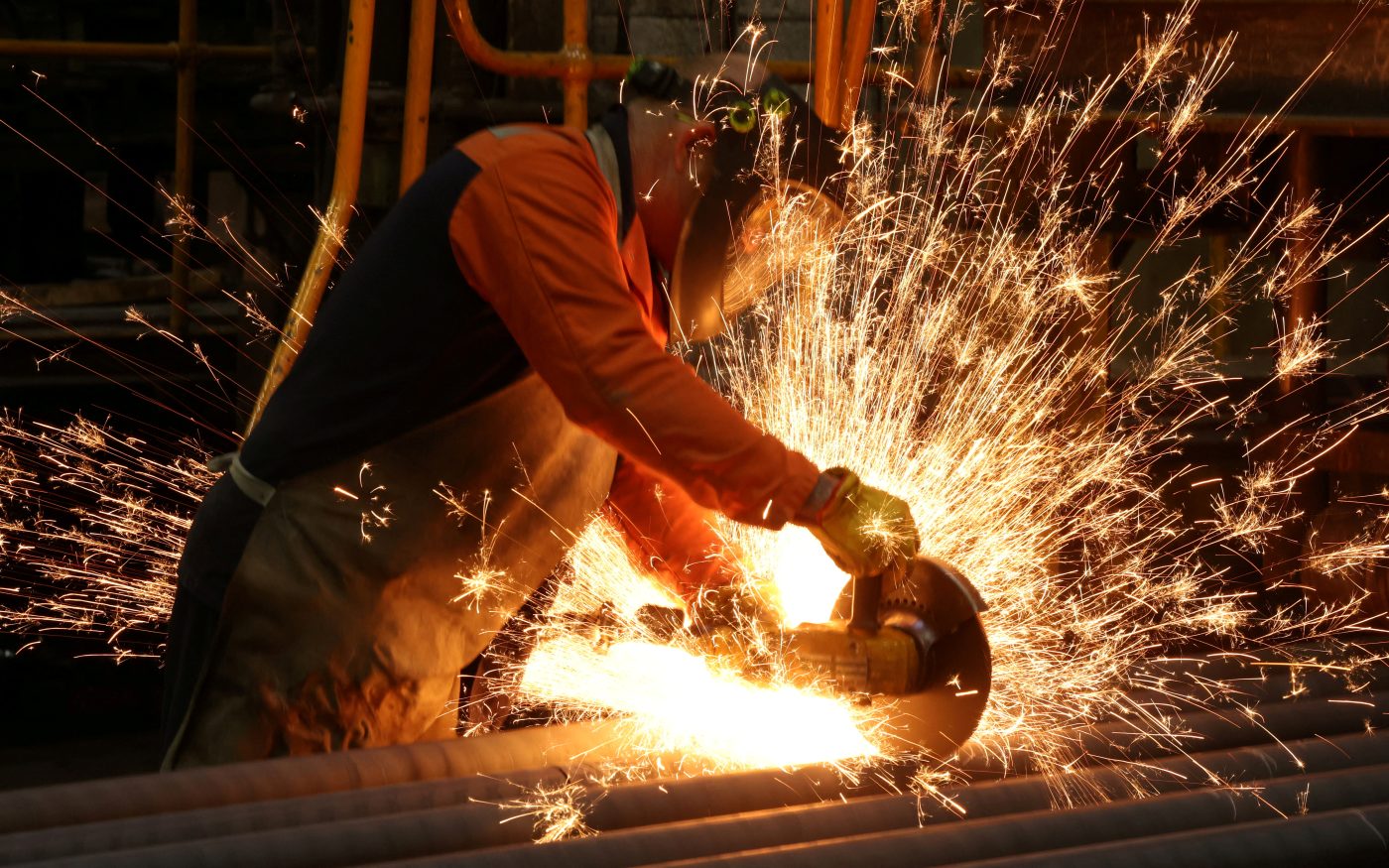Update, October 23: At the White House EU-US summit on October 20, negotiators failed to settle disputes over tariffs on steel and aluminum. War in Israel and Ukraine overshadowed hopes to forge a transatlantic decarbonization alliance.
The seeds of a trade truce were planted in late 2021 when US President Joseph Biden and European Commission President Ursula von der Leyen reached a deal to suspend both Trump-imposed tariffs on foreign steel and aluminum — 25% and 10%, respectively — and European retaliatory tariffs on bourbon and Harley-Davidson motorbikes. The two leaders agreed to negotiate “the world’s first carbon-based sectoral arrangement on steel and aluminum trade by 2024.”
It has proved an overambitious goal.
The proposed solution is a “Global Agreement on Sustainable Steel and Aluminum.” It’s pitched as a club of countries that agree on shared environmental standards and limits on government subsidies and overproduction for these two crucial products. Countries that do not accept these rules will face tariffs.
It’s hard not to see China looming in the background: it is the world’s largest producer of crude steel, manufacturing about half of the global total. China’s subsidized steel and aluminum benefits from loose environmental standards. According to the OECD, China is the driving force behind one-quarter of new steel and aluminum plants under construction worldwide — risking oversupply.
A united EU-US front could become a powerful tool to address market distortions and decarbonization — underlining the growing transatlantic consensus about “de-risking” from China. The US has imposed semiconductor export controls, toughening them in the run-up to the Washington summit. The EU has agreed to include chips in the critical technology areas they want to shield from China. Brussels has also launched anti-subsidy probes into Chinese electric vehicles and steel.
These probes underline how the EU-US views on steel and EVs reconverging. Brussels is heeding Washington’s warning against China. But full transatlantic alignment remains elusive. EU member states are reportedly negotiating down to the wire over the tariff details, with some capitals worried about angering China. In response, the US is scaling back its ambition to increase the chances of a deal.
The biggest hurdle revolves around Europe’s plans for a carbon border tariff, which would tax “dirty” imports breaking its environmental standards. The US, not to mention China, Turkey, and India, is skeptical. US officials warn that Congress would never impose new carbon taxes on American companies.
A fundamental philosophical conflict looms. Under President Biden, the US has abandoned free trade deals, embracing tariffs, subsidies, and protectionism, blocking cheaper products made in China. The EU has criticized the American tariffs and subsidies as protectionism, sabotaging international trade rules. At the same time, the EU has moved to impose its own “sovereignty” agenda, offering its own subsidies for European production of semiconductors and other products, putting up new barriers to imports and favoring European companies over US ones,
A narrow transatlantic steel and aluminum deal will not, in a single swoop, overcome these diverging trajectories. But it could at least provide a building block to find a common front to push back against China and fight climate change.
Otto Lanzavecchia is an Italian journalist for Formiche.net and Decode39. He focuses on international affairs, tech, energy, and the ecological transition.
Bandwidth is CEPA’s online journal dedicated to advancing transatlantic cooperation on tech policy. All opinions are those of the author and do not necessarily represent the position or views of the institutions they represent or the Center for European Policy Analysis.





